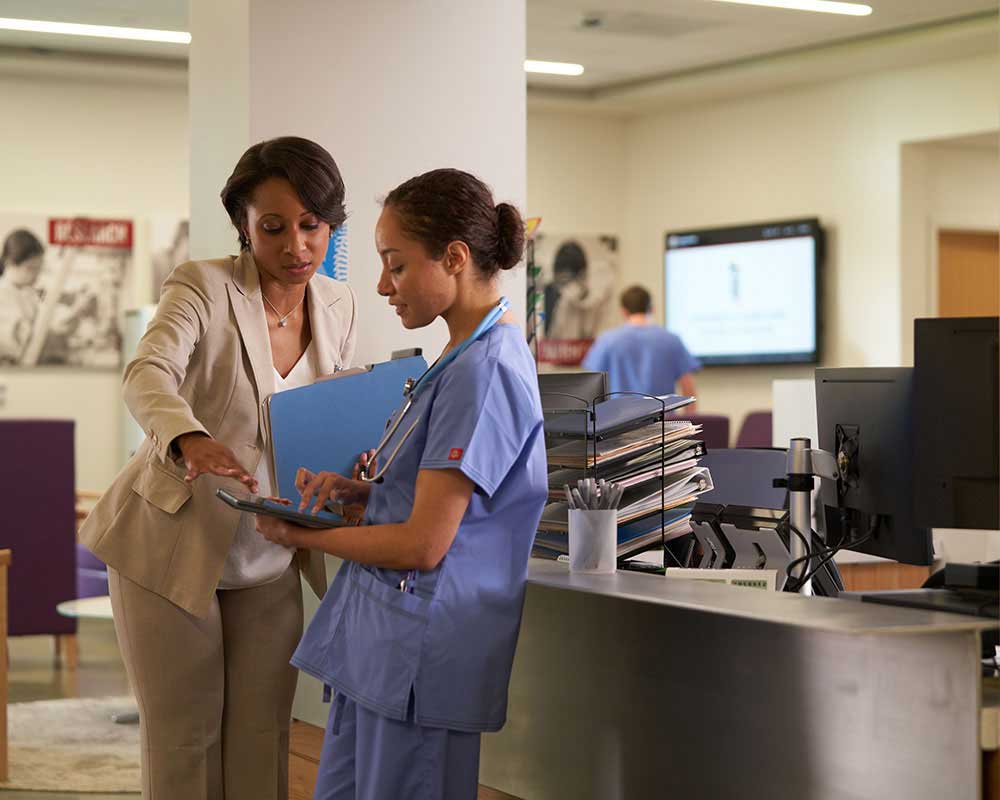The Future of Medical Administration: Patterns and Developments to Watch
The Future of Medical Administration: Patterns and Developments to Watch
Blog Article
Ideal Practices in Medical Management for Improving Efficiency and Reducing Prices
In the ever-evolving landscape of medical care, the search of finest methods in medical management is vital for enhancing efficiency and suppressing costs. By integrating innovative innovations such as electronic wellness records and telemedicine, healthcare service providers can enhance procedures and boost individual care. However, modern technology alone is not a cure all; enhancing resource allocation and promoting collaborative interaction among care groups are equally critical (medical administration). As companies strive to stabilize quality and expense, what approaches should be prioritized to attain these dual goals? The solution to these concerns hold the trick to a more sustainable medical care system.
Leveraging Advanced Modern Technology
In today's rapidly developing health care landscape, leveraging innovative modern technology is no much longer optional but necessary for effective medical management. The integration of digital options right into healthcare systems has changed the way centers run, simplifying processes and boosting client care. Electronic Health And Wellness Records (EHRs) are critical, supplying thorough person information that can be accessed immediately by authorized personnel, thus minimizing redundancy and decreasing mistakes. By systematizing person details, EHRs get rid of the requirement for troublesome paperwork and facilitate smooth interaction amongst doctor.
Telemedicine is an additional technological advancement that has actually changed individual interaction. It supplies comfort for both patients and medical care experts by making it possible for remote consultations, which can lower the requirement for in-person gos to and maximize appointment organizing. Additionally, telehealth systems can extend healthcare accessibility to rural or underserved areas, linking spaces in treatment delivery.
Moreover, the usage of Artificial Intelligence (AI) and artificial intelligence is coming to be increasingly widespread in predictive analytics, permitting very early discovery of potential health and wellness concerns and more educated decision-making. These modern technologies, when integrated successfully, can boost analysis precision and personalize individual therapy plans, eventually causing boosted healthcare results and operational performance.
Optimizing Resource Appropriation
By purposefully taking care of sources such as workers, devices, and financial resources, healthcare facilities can dramatically boost their functional performance, improve patient end results, and lower unneeded expenditures. The initial action in enhancing resource allocation entails carrying out an extensive assessment of existing possessions and determining areas where sources may be underutilized or overextended.
Focusing on resource allowance based on patient requirements and solution needs is necessary. Carrying out adaptable staffing models can additionally optimize labor resources by adjusting workers allotment in feedback to rising and fall person volumes.
Financial resources must be meticulously monitored and designated with strategic foresight to support both short-term functional needs and long-lasting institutional goals. This consists of investing in training programs that enhance personnel proficiencies and embracing energy-efficient methods that lower functional costs (medical administration). Ultimately, an optimized resource allowance method cultivates a sustainable healthcare environment that is responsive, efficient, and financially prudent
Streamlining Workflow Procedures
When health care centers aim to improve operational effectiveness, enhancing process procedures ends up being a critical focus. Effective operations reduce redundancy, eliminate unneeded steps, and boost control amongst medical care experts. This technique not only accelerates solution distribution yet likewise improves the quality of patient treatment.

Next, innovation integration plays a considerable duty in improving process. Carrying out electronic health and wellness documents (EHRs) and computerized doctor order access (CPOE) systems decreases documents, decreases human mistake, and guarantees details is accessible to all appropriate employees. Additionally, leveraging telemedicine platforms can enhance person consultations and follow-ups, reducing the strain on physical framework.

Inevitably, structured operations cause set you back decreases and enhanced individual contentment, cultivating an extra lasting medical care atmosphere.
Enhancing Information Monitoring
Structure upon structured process, enhancing data management becomes an essential part in progressing healthcare management. Effective data management systems are important for preserving accurate person documents, enhancing decision-making, and making sure compliance with regulatory criteria. By applying durable data management remedies, health care facilities can boost the high quality of client treatment while simultaneously reducing functional costs.
One trick element of enhancing data management is the assimilation of sophisticated digital health and wellness record (EHR) systems. These systems promote the seamless exchange of person info throughout different divisions, decreasing replication of tests and decreasing errors. A properly designed EHR system supports information analytics, enabling health care companies to recognize patterns and make educated decisions pertaining to client treatment.
Moreover, securing individual data is vital. Adopting detailed cybersecurity measures, including file encryption and regular audits, guarantees the honesty and privacy of delicate information. This not only secures patients however additionally keeps the institution's track record.
Buying personnel training is an additional crucial aspect. Enlightening healthcare experts on information monitoring techniques enhances their capacity to efficiently use modern technology, leading to improved client results. To conclude, boosting information administration via innovative modern technology and comprehensive training is important for accomplishing effectiveness and expense reduction in medical administration.
Fostering Collaborative Interaction
A critical component in advancing clinical management is cultivating joint interaction amongst health care specialists. Reliable communication is extremely important for ensuring smooth person treatment, maximizing therapy results, and decreasing errors. By urging open dialogue and coordination across multidisciplinary groups, medical care companies can improve their operational efficiency and reduce unneeded prices.
Central to this technique is the combination of communication technologies such as digital wellness records (EHRs) and protected messaging platforms, which facilitate the quick exchange of vital individual information. These devices allow healthcare service providers to access and share data in actual time, making sure that all view publisher site staff member are educated and aligned in their decision-making procedures. Normal team conferences and interdisciplinary rounds can additionally promote a society of collaboration and liability.
Training programs concentrated on enhancing interaction abilities are also essential. These programs can assist staff establish the capacity to communicate details clearly and pay attention actively, therefore reducing misunderstandings and cultivating a supportive job environment. On top of that, taking on standardized interaction methods, such as SBAR (Circumstance, History, Analysis, Recommendation), can enhance the exchange of information, making sure that essential details are communicated succinctly and efficiently. Ultimately, promoting joint communication results in boosted medical care delivery and expense financial savings (medical administration).

Final Thought
Integrating innovative modern technology, such as digital wellness documents and telemedicine, alongside optimized resource allotment and streamlined workflow processes, is vital for enhancing efficiency in clinical management. Effective data management and fostering collaborative interaction amongst health care teams are important for lessening redundancies and enhancing treatment quality. By prioritizing preventative treatment and participating in top quality improvement efforts, medical care organizations can achieve substantial cost financial savings and improved patient end results, thereby guaranteeing lasting health care delivery in an increasingly intricate setting.
Report this page